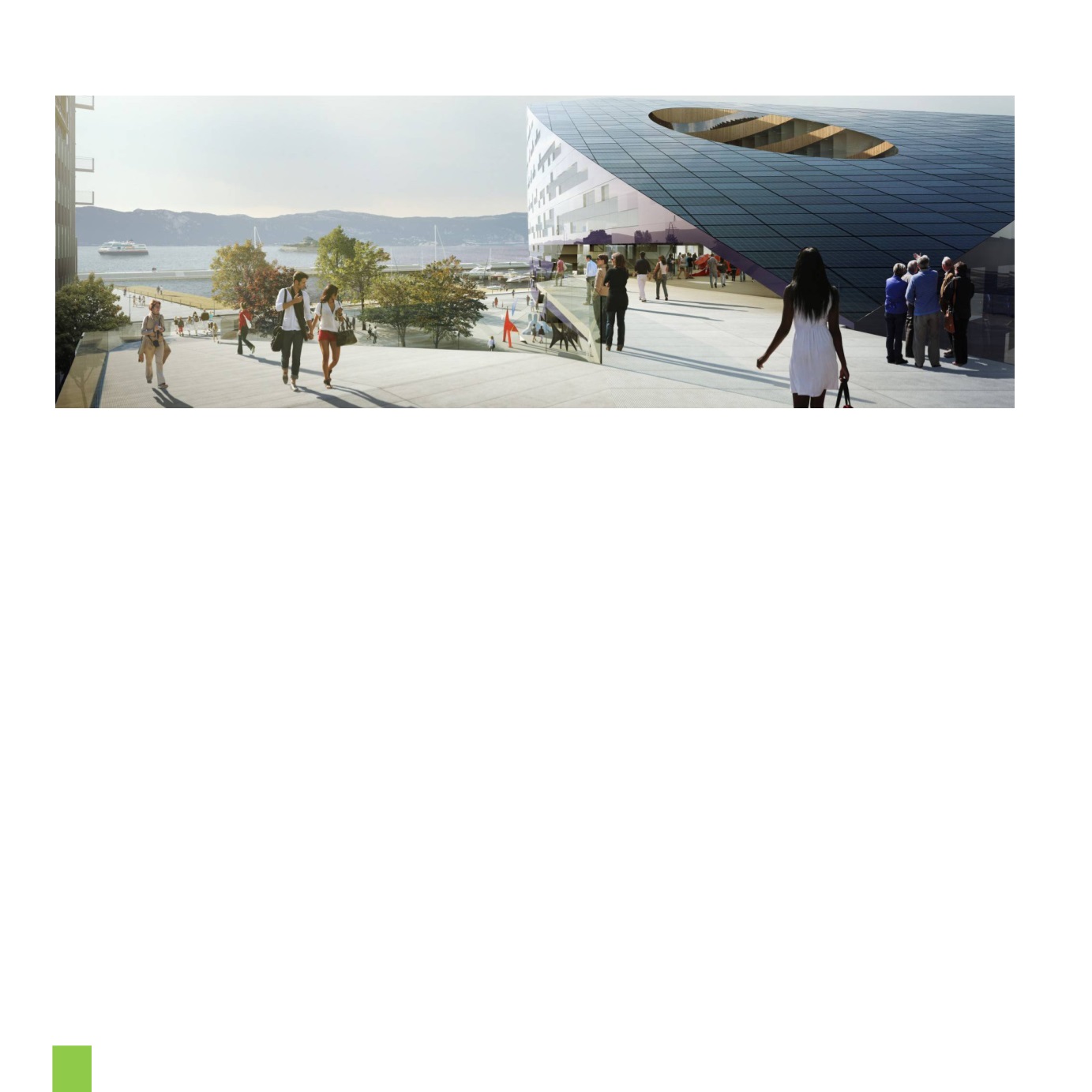

26
ZEB
annual report 2014
Powerhouse Brattørkaia. Illustration: Snøhetta/MIR
|
Powerhouse Brattørkaia. Illustrasjon: Snøhetta/MIR
(IED) process, i.e. a early phase design
process where the client and the design team
collaborate and make use of the talents and
insights of all participants to optimize lifecycle
energy efficiency.. In the PH Brattørkaia
design process the stakeholders that took part
in the workshops were; Client representative,
Project manager, Architect, Interior architect,
Landscape architect, Environmental
coordinator, Responsible engineer energy
concept, Fire engineer, Electrical engineer,
Daylight consultant, Structural engineer,
Material adviser embodied energy, Mechanical
engineer, Acoustical engineer, Entrepreneur,
Producer of the climatic envelope, Building
automation adviser, Renewable energy
consultant, Risk management adviser, Cost
adviser.
The schematic design phase was structured
around a series of six workshops and
stretched over a time period of approximately
eight months from August 2011 until the
beginning of March 2012.
WS-0 “Proof of concept” workshop
WS-1 Vision, definitions and criteria
WS-2 Programming and system
boundaries
WS-3 Energy reduction and production
WS-4 Integration and optimization
WS-5 Quality control
The study shows that achievement of the
Plus-energy and Zero Emission Building
target profit from development of skills and
of a shared dialogical “field” which acts
as a work-space for the interdisciplinary
design team. Innovation appeared when a
real meeting of perspectives took place in a
dialogical interdisciplinary “field”. An example
of this is the demands on air flow rates in the
Norwegian building code, which are relatively
high compared to other European countries.
To achieve a Net-Positive energy balance it
was necessary to push the boundaries for
established solutions; renegotiate “the rules
of the game”, so to speak. Key for the low
energy concept was the development of a
hybrid ventilation strategy. The developed
ventilation concept works with less air flow
rates than traditional ventilation concepts.
For this concept to work it was necessary to
establish an agreement in the group to accept
absolute minimum airflow rates. According to
the process leader, this decision had to have
foundation in the whole group, if not it could at
some point stop the project. In particular it was
essential that the one responsible for the area
where a solution was negotiated, the one that
could stop the project, was part of the decision
to push the boundaries. Still it is demanding to
achieve this dialogical “field” in terms of time
and resources, but once it is achieved it may

















